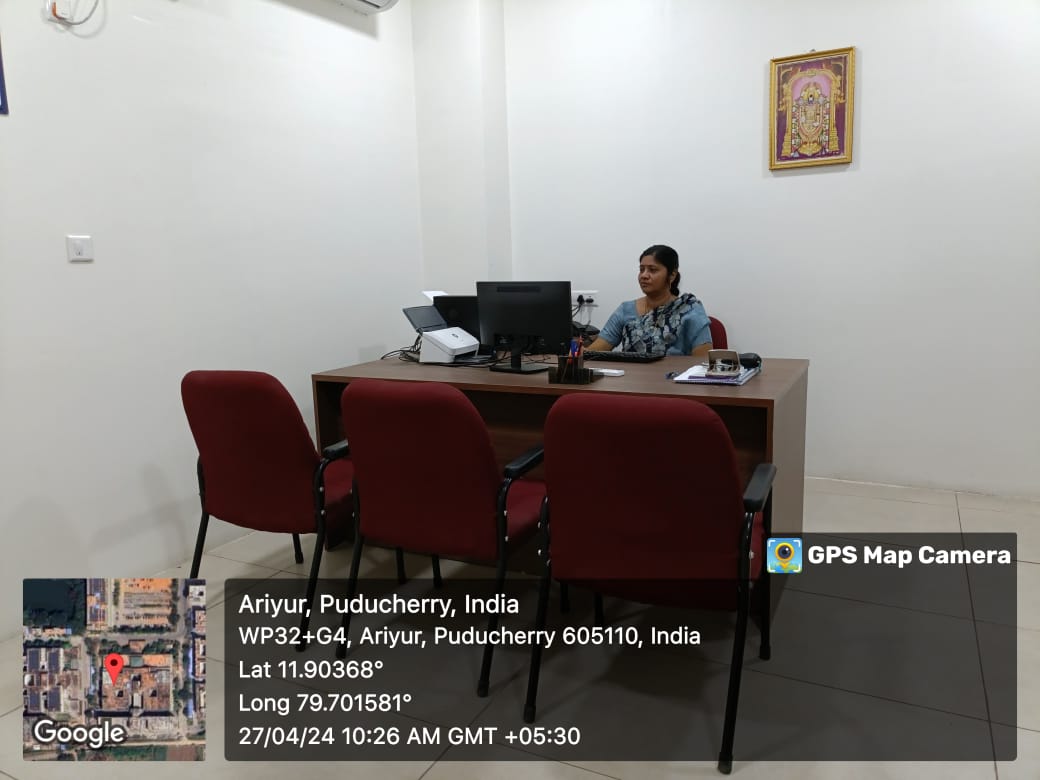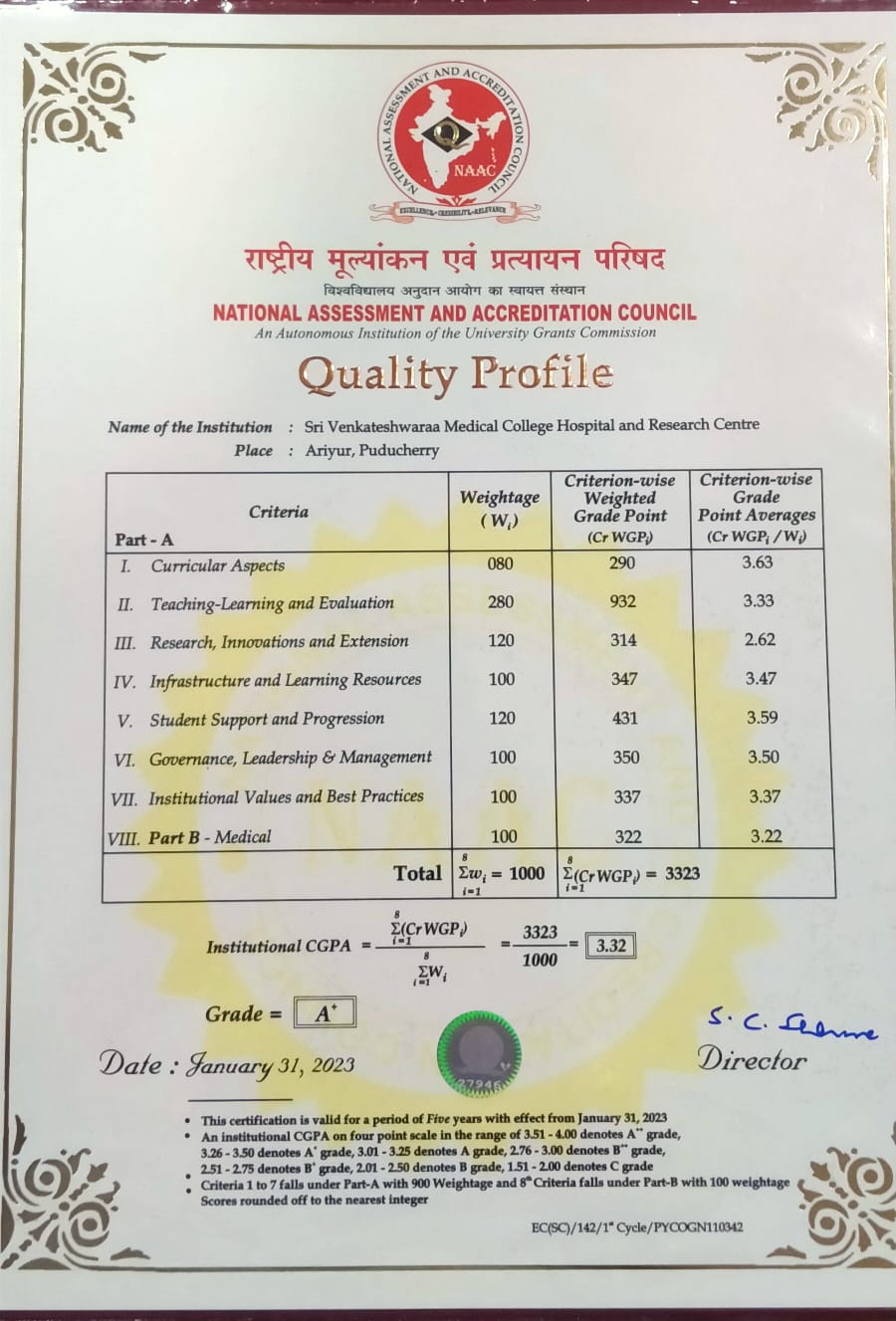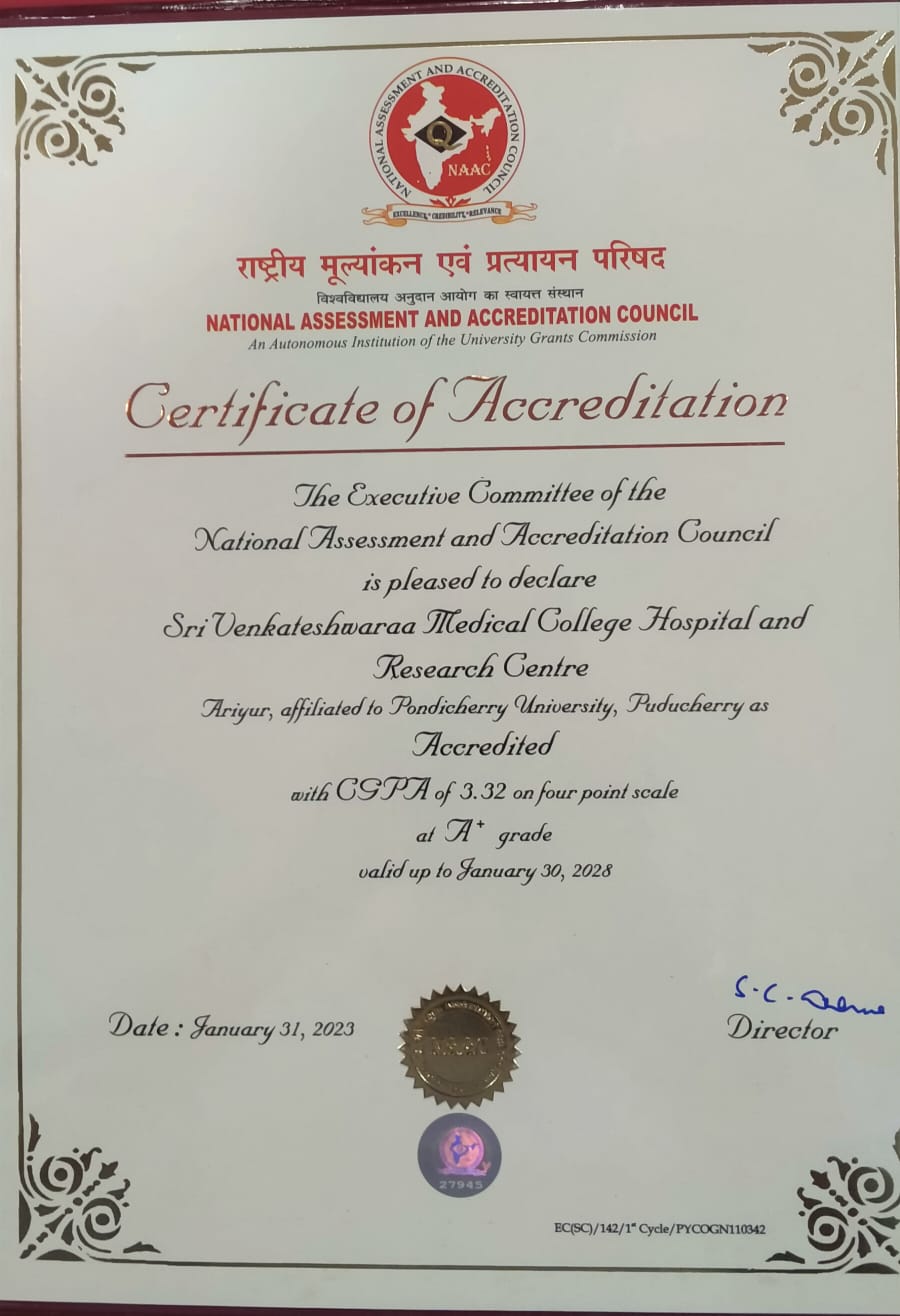About IQAC
Sri Venkateswaraa Medical College Hospital and Research believes in quality assurance for its excellence and established an IQAC with the following vision.
- Home
- Vision
- Objectives
- About IQAC

From IQAC Coordinator’s Desk:
Greetings!
Sri Venkateshwaraa Medical College Hospital and Research Centre established Internal Quality Assurance Cell (IQAC) on 15th October, 2020. The Cell has been functioning actively for improving our Academic and Administrative activities. It is an internal quality assurance mechanism of the institution which works towards realization of the goals of quality enhancement and sustenance. IQAC is a significant administrative body that is responsible for all quality matters, to initiate, plan and supervise various activities and develop a system for conscious, consistent and catalytic improvement in the overall performance of our Institution.
The IQAC assures the stakeholders i.e., students, parents, teachers, staff, management and society in general – of the accountability and transparency in the quality management system of the institution and its concern for ensuring quality of education being imparted. The IQAC of SVMCH & RC organizes various programs for faculty, administrative staff and quality circle members.
Through all these measures, the IQAC happens to be one of the important components of our Institution which ensures long lasting quality and uninterrupted up gradation in all aspects of the Institution.
With Best wishes,
Dr. R. Latha,
IQAC Coordinator
SVMCH & RC
To improve the academic and administrative performance of the Institution and to promote quality enhancement through internalization of quality culture and institutionalization of best practices
- To build and nurture a quality culture in the Institution.
- To become a driving force through intervention strategies to remove the deficiencies and enhance quality.
The Internal Quality Assurance Cell (IQAC) of Sri Venkateshwaraa Medical College Hospital and Research Centre (SVMCH & RC) was established in 2020 as a dynamic cell which strives to develop the quality culture among students, academic and administrative staff. The cell was constituted as per the latest notifications from NAAC with highly qualified, ambitious and dedicated members to fulfill the Vision and Mission of the esteemed Institution, thereby, making quality the defining element of SVMCH & RC. The IQAC aims to develop conscious and consistent actions so as to improve the academic and administrative performance of the Institution and to promote quality enhancement through internalization of quality culture and institutionalization of best practices. The periodically arranged meetings stimulate the academic environment for promotion of the teaching-learning and research quality in the Institution. With the constant support given by IQAC, the Institution has sustained the ISO 20001:2018 certification for implementing Educational Organizations Management System for the scope of Education leading to MBBS, MS and MD degrees. The laboratories of SVMCH & RC which had been previously accredited by the National Accreditation Board for Testing and Calibration Laboratories (NABL), a prestigious National accreditation body, for Molecular testing have undergone scope extension for Microbiology, Pathology, Biochemistry. The hospital is marching towards NABH pre-accreditation (Entry level) by National Accreditation Board for Hospitals and Health care providers, a constituent Board of Quality Council of India. The Institution has participated in National Institutional Ranking Framework 2022. After the establishment of IQAC various CMEs have been conducted, related to quality enhancement of teaching and non teaching faculty. Regular feedback is obtained from all the stakeholders on various aspects, analyzed and action taken report is prepared every year. IQAC monitors the activities of the various committees of SVMCH & RC and contributes significantly in accelerating the academic and administrative performances of the Institution.
- IQAC Committee
- IQAC MOM
- Quality Initiative Programs
- Self Study Report
- DVV
- Institutional Distinctiveness
- Best Practices
- Institutional Grade Sheet
- Annual Report
- Academic Excellance
- NAAC Accreditation
- Code of Conduct
- Strategic Plan
- (AQAR) 2023-24
- (AQAR) 2022-23
- Student Satisfaction Survey (SSS)
| Year | Date | Link |
| 2020 | 31.12.2020 | Click Here To View |
| 2021 | 09.04.2021 | Click Here To View |
| 23.06.2021 | Click Here To View | |
| 31.08.2021 | Click Here To View | |
| 03.12.2021 | Click Here To View | |
| 2022 | 29.03.2022 | Click Here To View |
| 22.08.2022 | Click Here To View | |
| 26.12.2022 | Click Here To View | |
| 2023 | 20.04.2023 | Click Here To View |
| 14.07.2023 | Click Here To View | |
| 27.11.2023 | Click Here To View | |
| 2024 | 26.03.2024 | Click Here To View |
| 20.06.2024 | Click Here To View | |
| 24.09.2024 | Click Here To View | |
| 30.12.2024 | Click Here To View | |
| 2025 | 13.03.2025 | Click Here To View |
| Title | Link |
|---|---|
| 10.12.24 – AI Tools in Medical Research Hands on Training for Undergraduates | Click Here |
| 16.11.2024 – Prominent Alumni | Click Here |
| 22.10.24 – Cyber Crime and Security | Click Here |
| 14.10.24 – International Dental Career gateway – Germany | Click Here |
| 30.09.24 – Report on Nutri Fest – 2024 | Click Here |
| 05.09.2024 – 06.09.2024 Hands-on Workshop Plagiarism Detection Tools and Techniques | Click Here |
| 17.08.2024 – Personality development programme for faculties Integral approach | Click Here |
| 26.07.2024 – National Conference 2024 | Click Here |
| 21.06.2024 – International Yoga Workshop Teaching & Non Teaching | Click Here |
| 21.06.2024 – ISDE Academy TRANSITION TO BINARY AND MATURITY BASED GRADED ACCREDIATION | Click Here |
| 14.06.2024 – Fire Extinguisher Usage | Click Here |
| 4.05.2024 – World Environment Day | Click Here |
| Title | Link |
|---|---|
| A. Best Practice 1 – EEE | Click here |
| A. Best Practice 2 – HICC | Click here |

| Title | Link |
|---|---|
| 1. Annual Report 2020 – 22 | Click here |
| 2. Annual Report 2022 – 23 | Click here |
| 3. Annual Report 2023 – 24 | Click here |

| Title | Link |
|---|---|
| Employee code of conduct SVMCHRC | Click here |
| Staff code of conduct SVMCHRC | Click here |
| Student code of conduct SVMCHRC | Click here |




